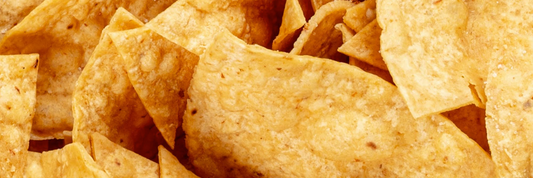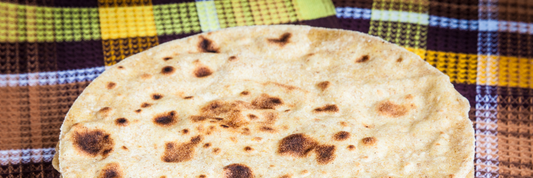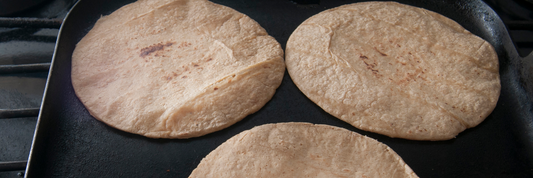Many people confuse Parmesan and Parmigiano Reggiano, but these cheeses have key differences in origin, production, and flavor. Understanding these distinctions is important for food lovers, small businesses, and culinary professionals who want authentic quality. This article will explain what sets them apart, compare their tastes, and help you decide which is better for your needs.
- Types of Parmesan Cheese: Varieties, Uses & Storage Tips
- How to Identify Parmesan Cheese: The Complete Guide to Spotting Authentic Parmesan
- Parmesan Cheese Benefits: Nutrition Facts You Didn’t Expect
What is Parmesan?
Parmesan is a generic term commonly used outside Italy to describe a variety of hard, Italian-style grating cheeses. Unlike Parmigiano Reggiano, which is a protected designation of origin (PDO) product made exclusively in specific Italian regions, Parmesan can be produced anywhere in the world. This means that many cheeses labeled as Parmesan in the US, Australia, and other countries may not follow traditional Italian methods or meet the strict quality standards of authentic Parmigiano Reggiano.

Mass-produced Parmesan varieties often found in supermarkets are available in pre-grated forms, blocks, or wedges. These cheeses typically have a milder flavor and less complex texture compared to true Parmigiano Reggiano, partly due to shorter aging periods and different production techniques.
Legally, the term "Parmesan" can be used freely outside the European Union and countries recognizing the PDO status, which has led to widespread generic use. However, this global usage does not always guarantee the same taste, texture, or quality that discerning food lovers and culinary professionals expect from authentic Parmigiano Reggiano.
What is Parmigiano Reggiano?
Parmigiano Reggiano is the original, authentic Parmesan cheese, produced exclusively in Italy’s Emilia-Romagna region. It carries the prestigious Protected Designation of Origin (PDO) status, meaning it must be crafted according to strict production standards established by the Parmigiano Reggiano Consortium.
This cheese is made from raw cow’s milk, sourced only from specific provinces where cows are fed a carefully controlled natural diet. The milk must not undergo any heat treatment and is processed within hours of milking to preserve its quality.
Parmigiano Reggiano is aged naturally for a minimum of 12 months, with many wheels maturing for 24 to 36 months or longer to develop its complex flavors and granular texture. Every wheel is handcrafted by certified producers who follow centuries-old traditional methods, ensuring consistent quality and authenticity.

Only cheese that complies with all PDO specifications including origin, production, aging, and quality inspection can bear the Parmigiano Reggiano name and the distinctive markings on the rind.
Parmesan vs Parmigiano Reggiano: Key Differences
The terms “Parmesan” and “Parmigiano Reggiano” are often used interchangeably, but they represent very different cheeses when scrutinized closely. Knowing the key differences is essential for consumers, small food businesses, bakeries, and cheese shops who want to ensure authenticity, quality, and the best culinary results. Below is an in-depth comparison of these cheeses across critical factors:
|
Criteria |
Parmesan |
Parmigiano Reggiano |
|
Origin |
Parmesan is a generic name widely used around the world to describe hard, Italian-style grating cheeses produced outside Italy. There is no geographic restriction; it may be made in the US, Australia, or elsewhere. The term “Parmesan” is not protected in many countries, allowing for broad production. |
Parmigiano Reggiano is legally protected by the European Union’s PDO (Protected Designation of Origin) status. This means it can only be produced in specific provinces of Italy: Parma, Reggio Emilia, Modena, Bologna (west of the Reno River), and Mantua (south of the Po River). This strict locational limitation preserves the cheese’s historic and cultural heritage. |
|
Production Process |
Parmesan cheeses are generally produced industrially using mechanized equipment. To maintain consistency and extend shelf life, additives such as anti-caking agents, preservatives, and calcium chloride may be incorporated, especially in pre-grated or shredded products. Milk treatment might include pasteurization or other processing not allowed in authentic Parmigiano Reggiano. |
Parmigiano Reggiano production follows centuries-old traditional methods verified by the Parmigiano Reggiano Consortium. Only raw cow's milk from designated areas is used, without any heat treatment (no pasteurization). The milk is coagulated naturally with calf rennet, and the process involves hand craftsmanship at every stage. No additives or preservatives can be added, ensuring a pure, natural product. |
|
Aging |
Parmesan aging times vary widely, with some cheeses aged only a minimum of 6 months, resulting in a lighter flavor and softer texture. Shorter aging often means less complexity and fewer taste nuances. |
Parmigiano Reggiano undergoes a mandatory minimum aging period of 12 months, with many wheels matured between 24 and 36 months or beyond. This extended aging process develops the cheese’s granular texture, deep nutty and savory flavor profile, and the formation of crunchy tyrosine crystals, hallmarks of the true artisan cheese. |
|
Ingredients |
Ingredients in Parmesan cheeses can include milk (often pasteurized), salt, rennet, and sometimes anti-caking powders or coloring agents in pre-packaged grated varieties. Artificial additives may be present to enhance shelf stability and visual appeal. |
Parmigiano Reggiano contains only three natural ingredients: raw cow’s milk, salt, and natural calf rennet. The PDO guidelines prohibit any additives, preservatives, or artificial colorants, which guarantees a pure, authentic flavor true to its heritage. |
|
Price |
Parmesan is generally priced more affordably due to mass production, industrial processing, and shorter aging duration. It is widely available in supermarkets globally, making it accessible but often less nuanced. |
Parmigiano Reggiano commands premium pricing due to its artisanal production, geographical protection, extensive aging, and quality control. It is considered a luxury product and typically sold in specialty shops and gourmet food markets. |
|
Flavor |
Parmesan cheeses are usually milder with less complexity, sometimes salty or bland depending on production quality. They may lack the umami depth and rich nutty notes that characterize authentic hard Italian cheeses. |
Parmigiano Reggiano delivers a rich, full-bodied flavor with layers of nuttiness, savory umami, subtle fruity undertones, and a perfectly balanced salty profile that intensifies with aging. Its flavor is complex and well-rounded, making it highly prized for culinary uses. |
|
Texture |
Parmesan often has a smoother, sometimes even rubbery texture, especially in pre-grated forms. It lacks the distinctive grainy and crystalline crumbly texture seen in true Parmigiano Reggiano. |
Parmigiano Reggiano exhibits a clearly granular, crumbly structure with crunchy tyrosine crystals formed during maturation. This unique mouthfeel distinguishes it as a premium aged hard cheese. |
Why the PDO Status Makes Parmigiano Reggiano Truly Unique
The PDO (Protected Designation of Origin) certification awarded to Parmigiano Reggiano is more than a label, it is a legal seal of authenticity that preserves the traditional methods and regional specificity of the cheese. The PDO ensures:
- Geographical Authenticity: Cheese must be made in designated provinces using local raw milk.
- Traditional Production: Strict adherence to historical cheese-making techniques including raw milk usage and natural rennet coagulation.
- Strict Aging Requirements: Minimum 12-month aging with regular inspections to guarantee quality, taste, and texture.
- Quality Control: Each wheel is inspected by certified experts and marked with a unique serial number and dotted rind markings if it meets all standards, giving consumers confidence in its authenticity.
How These Differences Influence Culinary Applications
The intense and layered flavor of Parmigiano Reggiano makes it a chef’s favorite ingredient, ideal for grating over risottos, pastas, soups, or salads to add umami richness and a savory punch. It is also delicious eaten on its own or paired with balsamic vinegar and fresh fruits.
Parmesan cheeses, due to their milder or inconsistent flavor profiles, are typically suited for everyday cooking when budget constraints exist or when the cheese is used as a bulk ingredient in blends or processed foods.
Packaging & Presentation: A Critical Factor for Retailers
For cheese shops, delicatessens, and gourmet food retailers, packaging is not only about protecting Parmesan and Parmigiano Reggiano but also about communicating their distinct qualities and authenticity to customers.
- Sustainable Packaging: Eco-friendly, custom packaging designed specifically for cheese can help preserve freshness by controlling moisture and protecting against contamination.
- Premium Presentation: Elegant packaging featuring PDO seals, origin stories, and aging information educate consumers and justify higher price points for Parmigiano Reggiano.
- Differentiation: Visually distinguishing Parmesan products (generic or pre-grated) from authentic Parmigiano Reggiano on shelves helps customers make informed buying decisions.
By understanding these clear distinctions between Parmesan and Parmigiano Reggiano, consumers and businesses alike can appreciate what makes authentic Parmigiano Reggiano “The King of Cheeses” and select the best option suited to their taste and budget.

Which Is Better: Parmigiano Reggiano or Parmesan?
Choosing between Parmigiano Reggiano and Parmesan depends on your goals flavor, budget, and intended use.
- Flavor Authenticity
If you seek genuine, complex flavor and the true taste of Italian artisan cheese, Parmigiano Reggiano is the clear winner. Its intense umami, rich nutty notes, and distinctive granular texture provide an unparalleled experience, making it the go-to for gourmet dishes and memorable occasions. - Affordability and Casual Use
For those prioritizing cost efficiency, Parmesan cheeses offer a more affordable option suited for everyday meals. Their milder, less complex taste blends easily into casseroles, baked dishes, and salads, delivering value without overwhelming other ingredients.
Usage Recommendations
- Parmigiano Reggiano: Perfect for gourmet recipes, fine dining, high-end gift sets, weddings, events, and any setting where quality and authenticity matter.
- Parmesan: Ideal for daily cooking, bulk recipes, pizzas, sandwiches, or any application where convenience and price take priority.
For Small Food Businesses (Bakeries, Cheese Shops, Event Organizers)
Small food businesses must choose between offering a truly premium experience or focusing on cost-effective accessibility:
- Stocking Parmigiano Reggiano lets you showcase exclusivity, superior quality, and attracts discerning customers who appreciate authenticity and tradition.
- Offering Parmesan increases accessibility, ensuring consistent supply, convenient formats (such as pre-grated), and affordability for a broader audience.
The Importance of Packaging
No matter which cheese you select, packaging is crucial. Premium cheeses like Parmigiano Reggiano shine in elegant, sustainable packaging that tells their artisanal story and reinforces their quality. Everyday Parmesan, meanwhile, benefits from packaging focused on freshness, convenience, and value helping retailers communicate the right message for each product line.
Buying Tips: How to Choose Between Parmesan and Parmigiano Reggiano
When shopping for Parmesan or Parmigiano Reggiano, knowing how to identify authentic products can help you get the best quality and value. Here are key tips to guide your purchase:
- Read the Label Carefully: Authentic Parmigiano Reggiano carries the name "Parmigiano Reggiano" stamped repeatedly along the rind of the cheese wheel or wedge. This distinctive dotted imprint is an official mark of origin and authenticity. Look for packaging labels with the PDO (Protected Designation of Origin) symbol or the red and yellow DOP seal, which certify genuine Parmigiano Reggiano.
- Check the Aging Time: Parmigiano Reggiano is aged for a minimum of 12 months, often much longer. Longer aging contributes to its characteristic texture and complex flavor. Avoid cheeses labeled simply “Parmesan” without a clear age indication, as they may be younger and less flavorful.
- Buy from Trusted Suppliers or Specialty Shops: Genuine Parmigiano Reggiano is frequently sold by specialty cheese shops, gourmet food retailers, and reputable suppliers. These outlets usually keep the rind on wedges for authenticity verification and proper freshness. Supermarket pre-grated Parmesan is often generic and may lack the full flavor and texture of aged Parmigiano Reggiano.
Common Myths About Parmesan & Parmigiano Reggiano
Understanding the truth behind some widely held misconceptions can help you make informed choices:
- Myth: “All Parmesan is Parmigiano Reggiano.”
Reality: Parmesan is a generic term used worldwide for Italian-style hard cheese, while Parmigiano Reggiano is a specific PDO-certified cheese made only in certain Italian regions using traditional methods. Not all Parmesan is authentic Parmigiano Reggiano. - Myth: “Pre-grated Parmesan is as good as freshly grated Parmigiano Reggiano.”
Reality: Pre-grated Parmesan, especially in supermarkets, often contains additives like anti-caking agents and may have lost much of its aroma and flavor due to processing and exposure to air. Freshly grated Parmigiano Reggiano from a wheel or wedge provides a far superior taste and texture experience. - Myth: “Packaging doesn’t affect cheese quality.”
Reality: Proper packaging is critical for preserving cheese freshness, flavor, and texture. Packaging that controls moisture, protects from contamination, and maintains the product’s integrity plays a significant role not only in quality preservation but also in consumer perception of premium cheeses like Parmigiano Reggiano.
By following these buying tips and understanding the myths, you can confidently select authentic Parmigiano Reggiano or Parmesan that best suits your taste and culinary needs.
Conclusion
Understanding the difference between Parmesan and Parmigiano Reggiano is crucial for anyone passionate about authentic Italian cheeses. Parmigiano Reggiano, with its PDO certification, traditional production methods, and extensive aging, delivers a richer, more complex flavor and distinctive texture. Parmesan, while more affordable and widely available, often lacks the depth and authenticity of its Italian counterpart. Whether you prioritize flavor, budget, or intended use, choosing the right cheese enhances your culinary creations. For small businesses and retailers, highlighting these differences through thoughtful packaging and education can elevate the customer experience and build trust. By making informed choices, you ensure every dish you prepare or sell honors the legacy of this iconic cheese.
If you love eco-friendly products, whether you’re a small shop or a cheese enthusiast, KimEcopak is ready to help. Share your questions, and KimEcopak will send you the perfect eco-packaging options within 24 hours.







